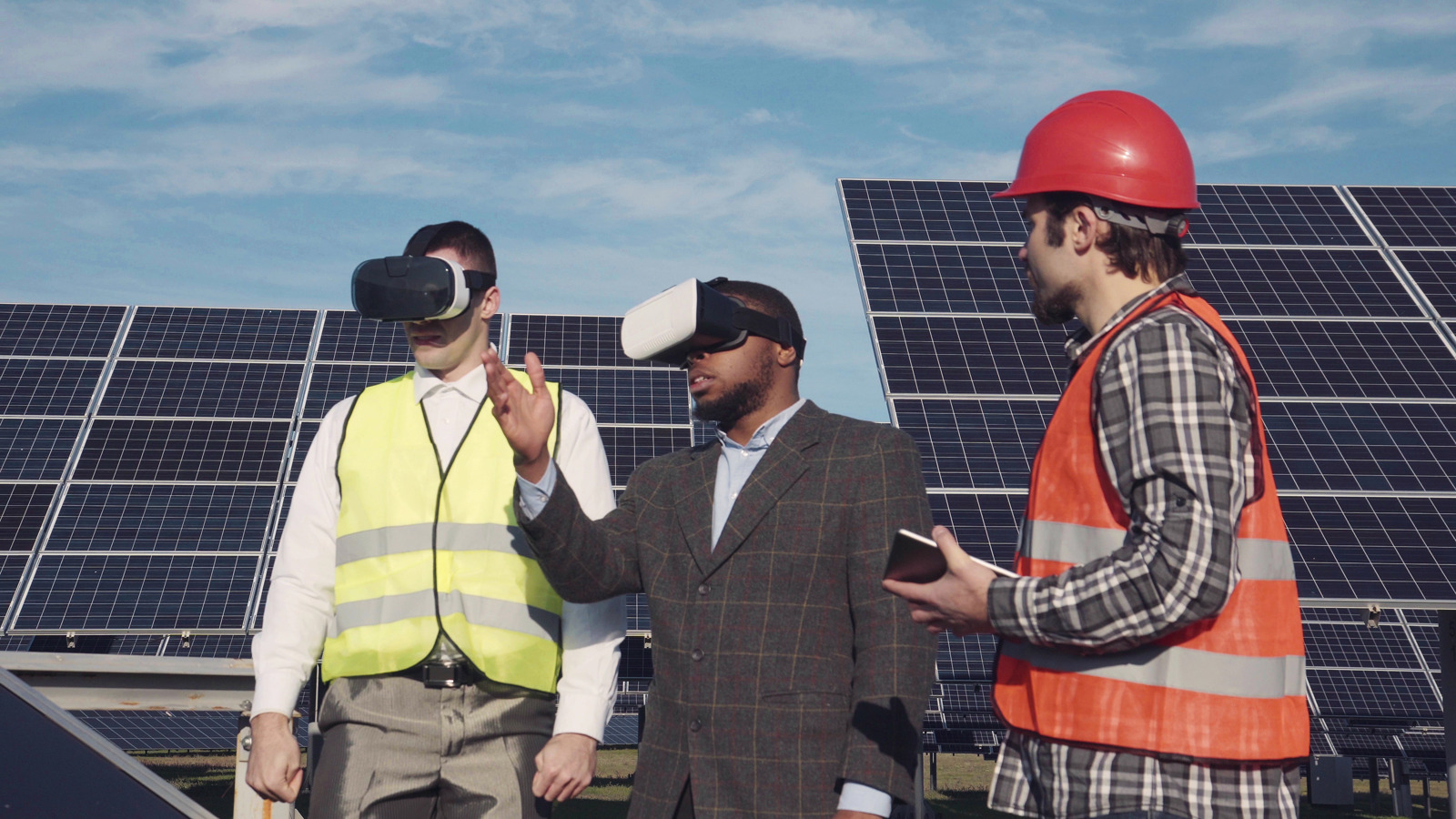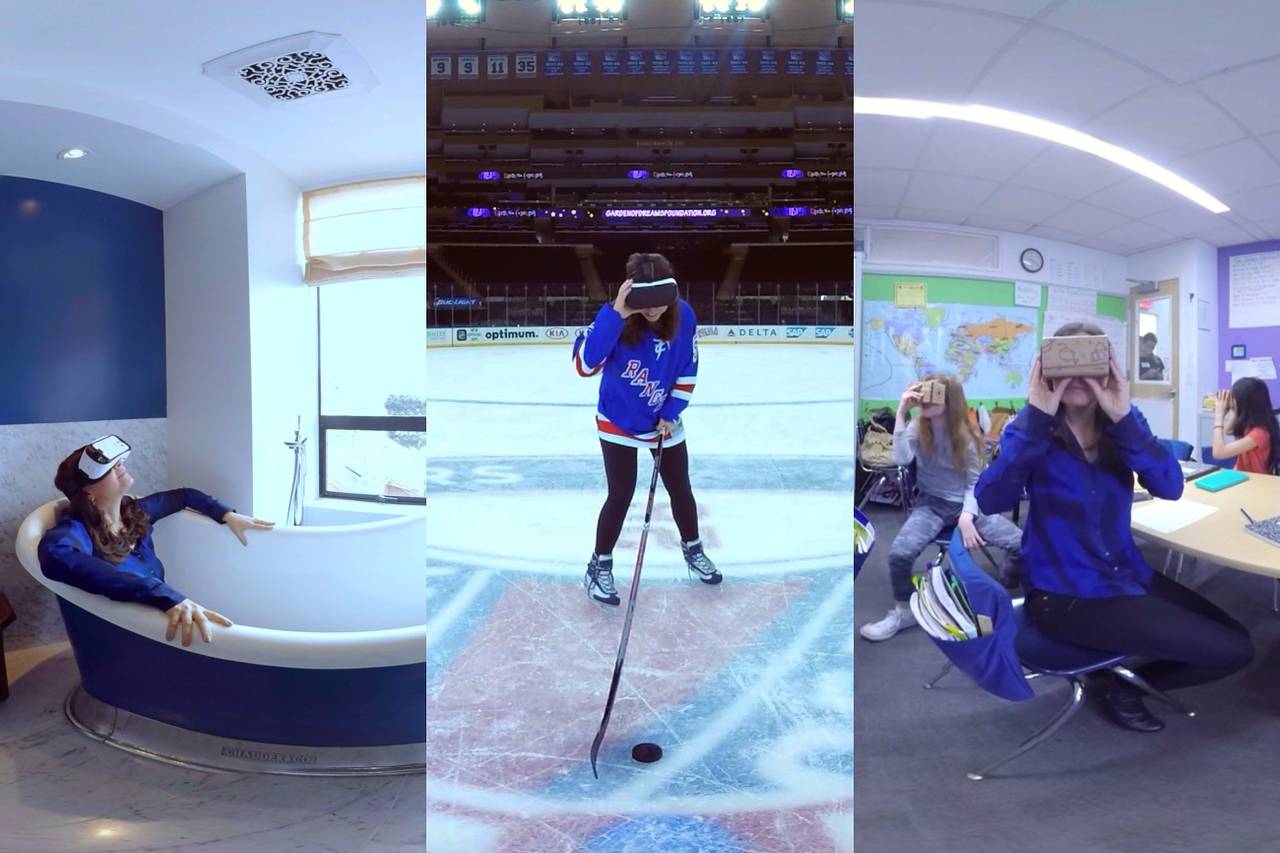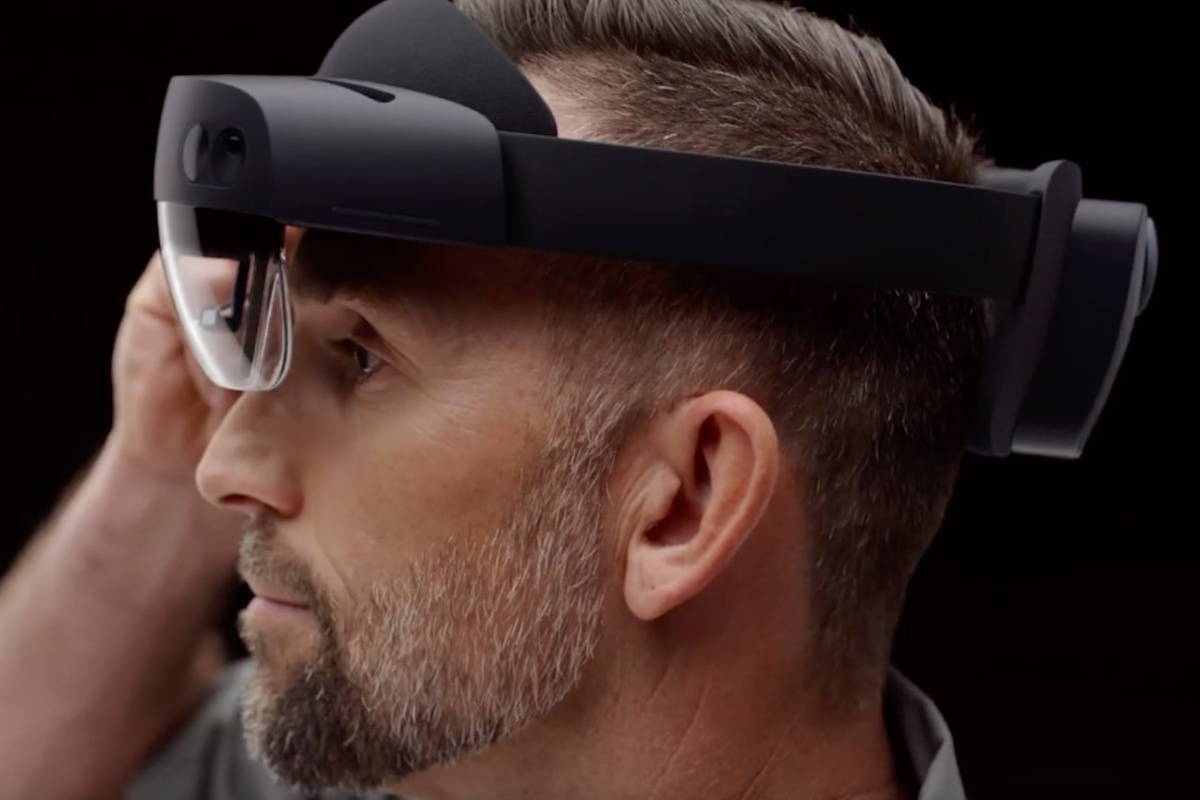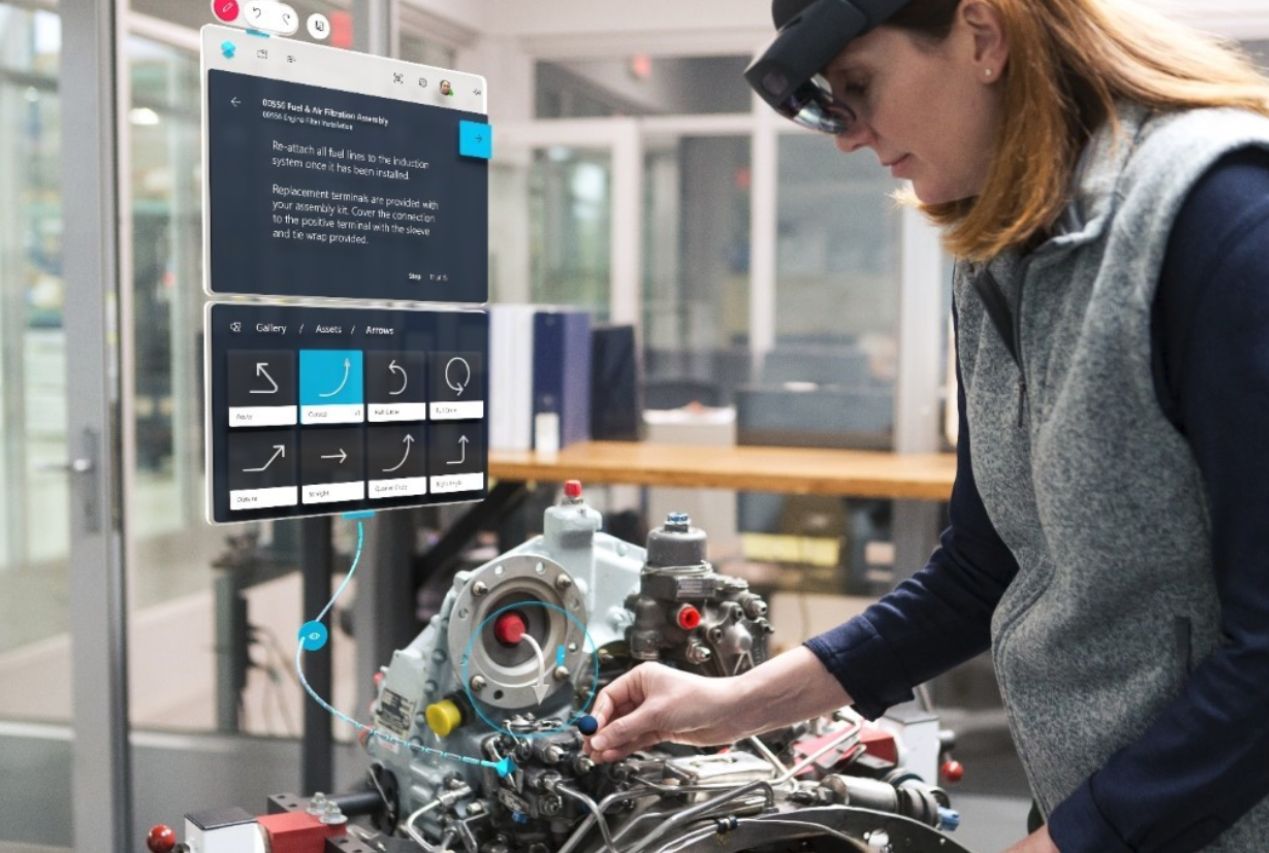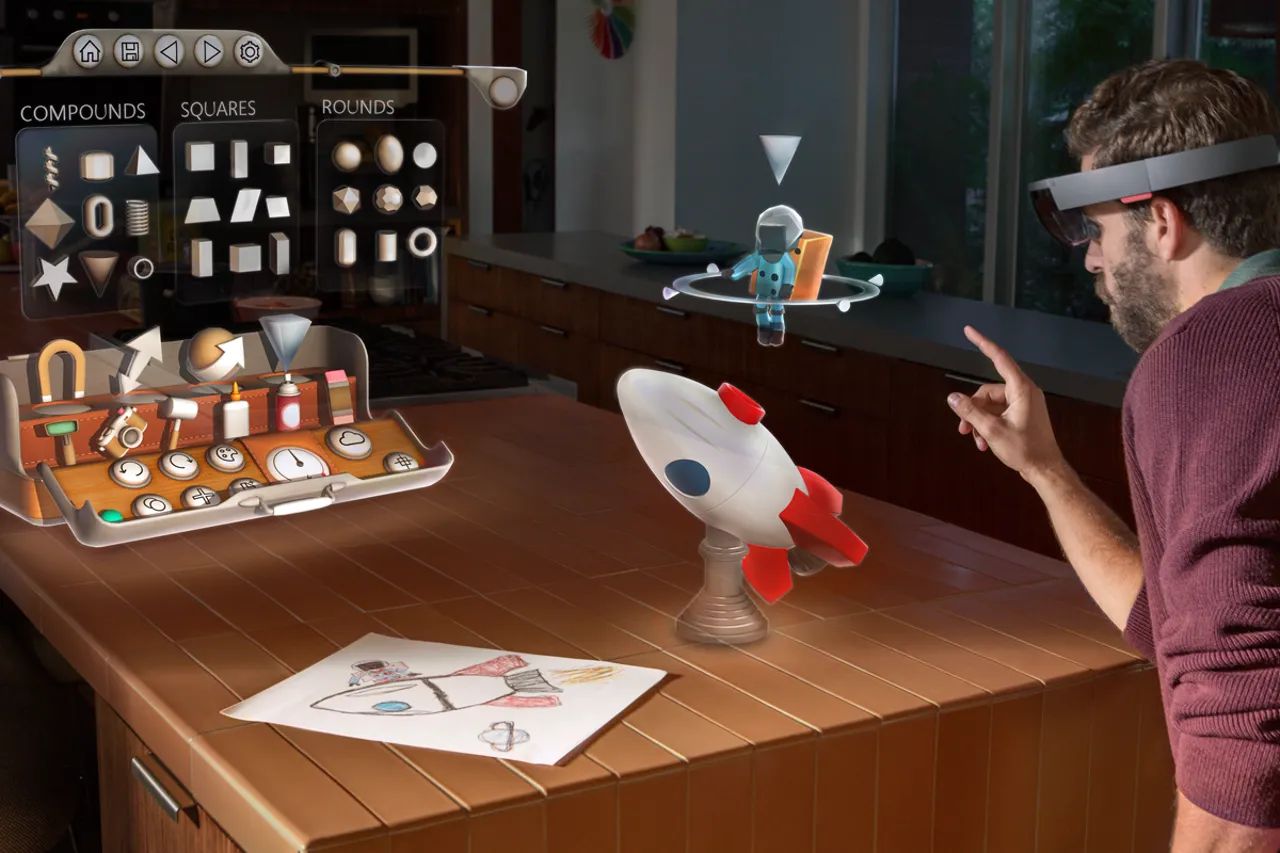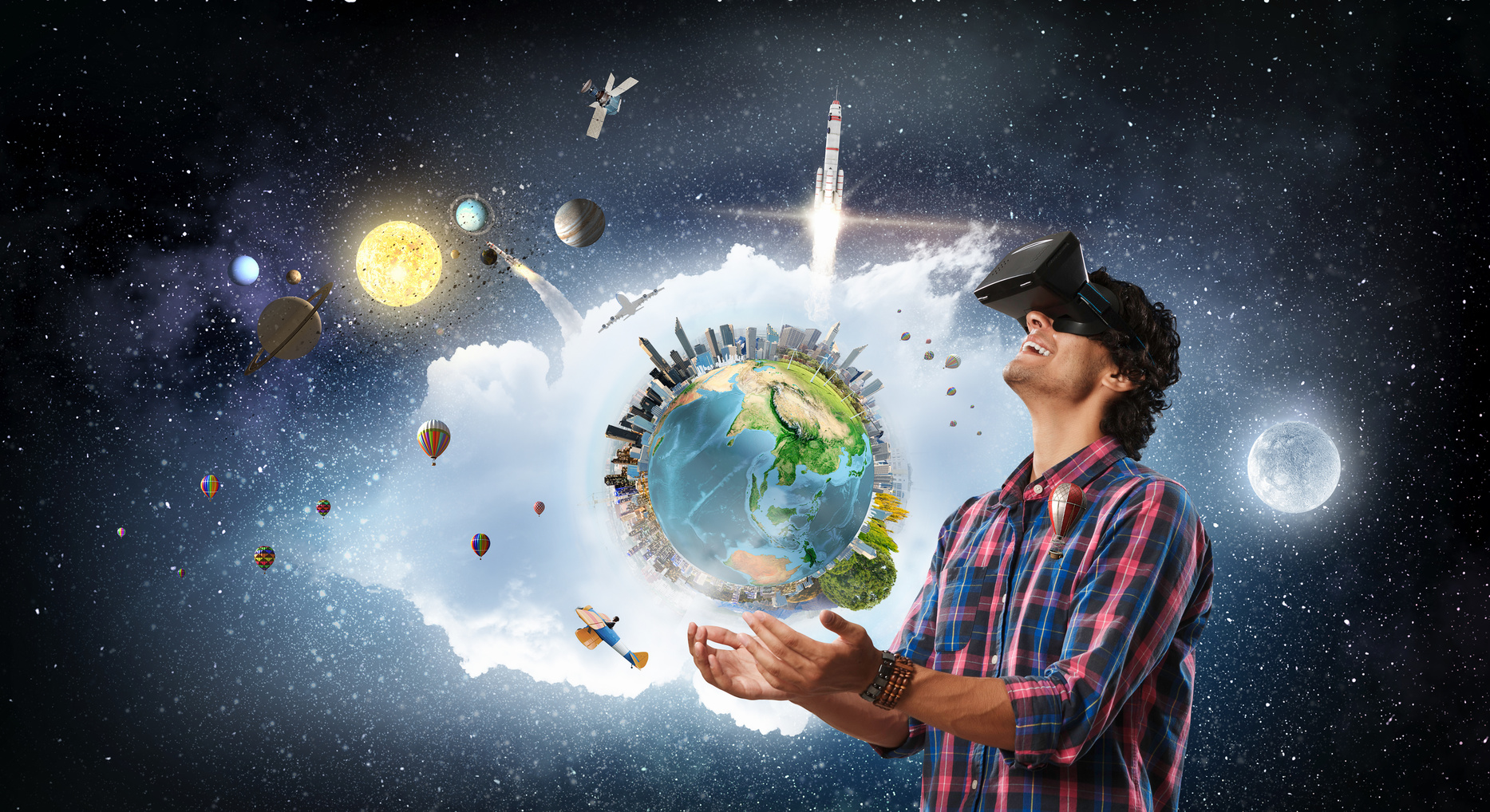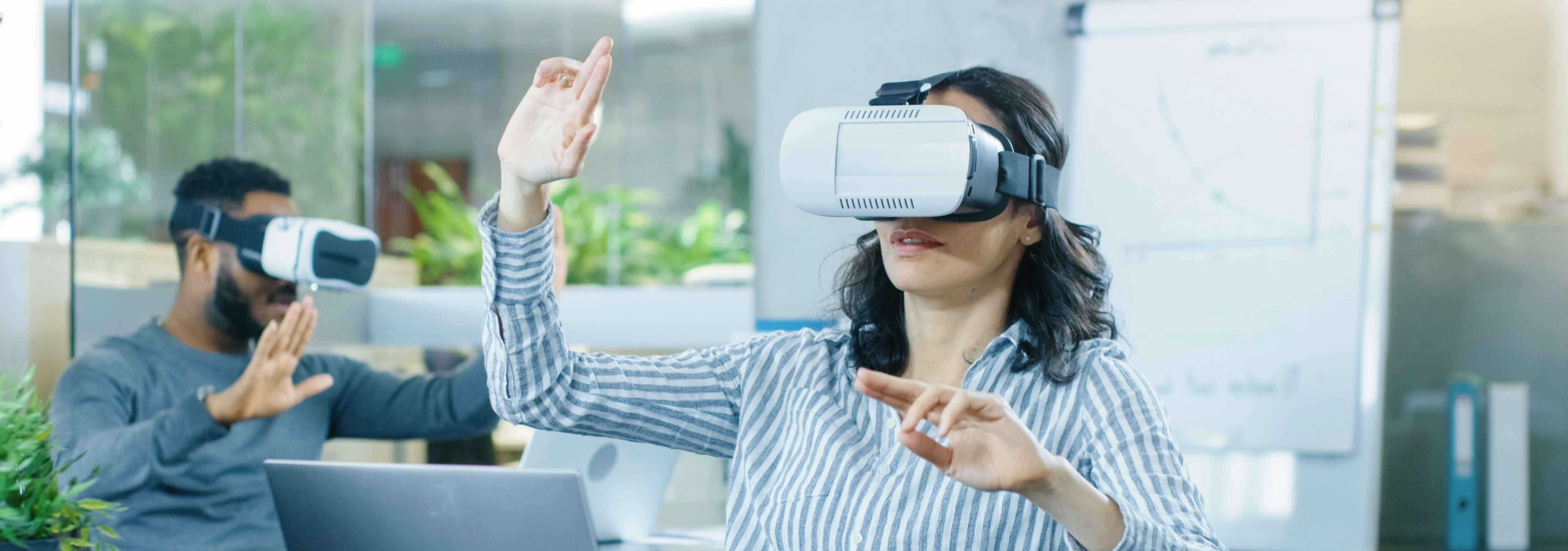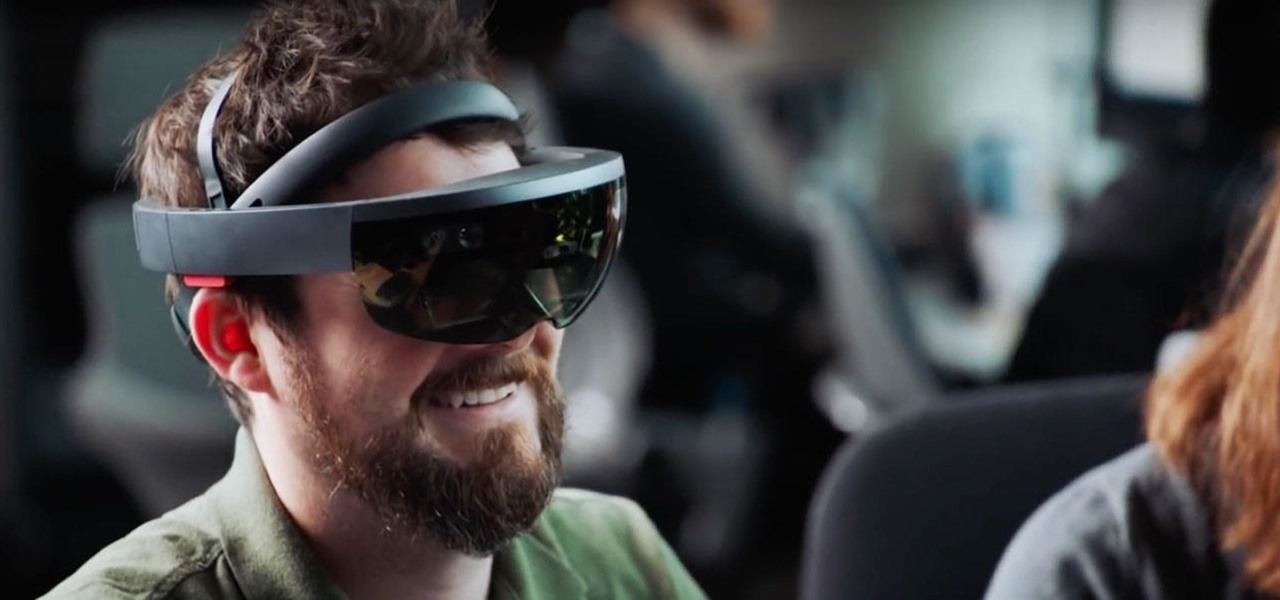Introduction
Virtual reality (VR) has revolutionized various industries, and the construction industry is no exception. With its immersive and interactive capabilities, VR technology has found unique applications that are transforming how construction projects are planned, executed, and managed. By creating virtual environments that simulate real-life scenarios, VR provides architects, engineers, contractors, and project stakeholders with invaluable tools to enhance design, improve safety, optimize collaboration, and streamline project management.
In the construction industry, where precision, efficiency, and safety are paramount, VR offers a myriad of advantages. It enables professionals to visualize and manipulate 3D models, walk through buildings before they are constructed, and assess potential risks in a controlled environment. Moreover, VR reduces the need for physical prototypes, accelerates decision-making processes, and enhances communication among project teams.
VR technology has the potential to redefine the construction industry, making it more efficient, cost-effective, and sustainable. By creating this virtual reality experience, contractors and stakeholders can explore alternative designs and construction methods to ensure optimal outcomes. With VR, the construction industry can overcome common challenges, such as errors in design, coordination issues, and unexpected on-site complications, leading to increased productivity and reduced costs.
Furthermore, utilizing VR in the construction industry can significantly impact safety measures and risk assessment. By simulating hazardous scenarios, workers can be trained more effectively and efficiently, reducing the potential for accidents and injuries. VR can also enhance safety planning, allowing construction teams to identify potential hazards before the physical construction begins, thus minimizing risks and ensuring worker well-being.
As technology continues to advance, the construction industry must embrace innovations like VR to stay competitive in today’s market. In this article, we will explore different ways in which VR can be utilized in the construction industry, ranging from design and visualization to remote inspections and marketing. By understanding the potential of VR, construction professionals can harness its power to revolutionize their practices and ensure successful project outcomes.
Design and Visualization
One of the most significant ways virtual reality is transforming the construction industry is through its impact on design and visualization. Traditionally, architects and designers rely on 2D plans, blueprints, and renderings to communicate their vision. However, these static representations can often be challenging to interpret accurately.
VR technology allows designers to create immersive environments where stakeholders can experience and interact with a virtual representation of the project. By putting on a VR headset, clients, architects, and contractors can walk through the virtual building, inspect its details, and get a realistic sense of space, proportions, and aesthetics. This level of immersion enhances collaboration and communication, ensuring that everyone involved is on the same page regarding design expectations.
Moreover, VR enables the exploration of design alternatives without the need for physical mock-ups or costly revisions. With the ability to manipulate virtual objects in real-time, architects and designers can instantly test different materials, colors, lightings, and layouts. This iterative process facilitates creativity and allows for more informed design decisions, resulting in more efficient and visually appealing buildings.
Additionally, VR technology provides a platform for early user feedback and engagement. Clients can experience and provide input on the virtual design, offering valuable insights that can be applied to refine the final product. By involving stakeholders in the design process at an early stage, VR helps ensure that their expectations are met, minimizing the risk of expensive design changes later on.
Furthermore, VR is not limited to architectural design visualization; it can also be utilized for urban planning and infrastructure development. By creating a virtual representation of an entire city block or a transportation hub, urban planners can assess the impact of proposed changes, such as traffic flow, pedestrian access, and overall aesthetics. This level of visual understanding enables better decision-making, resulting in more livable and sustainable urban environments.
In summary, VR technology has revolutionized the design and visualization process in the construction industry. By creating immersive virtual environments, professionals can collaborate more effectively, explore design alternatives, engage clients, and make informed decisions. The use of VR not only enhances the design process but also leads to more accurate and visually appealing outcomes.
Training and Simulations
Virtual reality is revolutionizing training and simulations in the construction industry, providing a safe and immersive environment for workers to enhance their skills and knowledge. Traditional training methods often involve on-site or classroom-based instruction, which can be time-consuming, expensive, and potentially hazardous. VR technology offers a realistic and controlled setting where workers can experience various construction scenarios and refine their abilities in a risk-free environment.
One of the key applications of VR in training is for equipment operation. Construction workers can use VR simulations to practice operating heavy machinery, such as cranes, excavators, or forklifts. By replicating the actual controls and movements, VR training provides a hands-on experience without the risks associated with operating equipment on a live construction site. This allows for efficient skill development, error identification, and corrective action before workers are exposed to potentially dangerous situations.
In addition to equipment operation, VR can also be utilized for safety training. Workers can be immersed in virtual construction sites with various hazards and challenges, allowing them to practice safety protocols and emergency procedures. By experiencing critical situations virtually, workers can develop the necessary skills to respond efficiently, reducing the risk of accidents on real construction sites.
Another area where VR training excels is in complex construction processes. For example, workers can simulate the installation of intricate building systems, such as electrical, plumbing, or HVAC. They can visualize the step-by-step procedures, interact with virtual components, and identify any potential issues or conflicts before the actual installation begins. This type of training not only improves the efficiency of construction processes but also ensures higher quality and reduces rework.
Moreover, VR training can be utilized for soft skills development, such as communication, teamwork, and problem-solving. Construction professionals can participate in virtual collaborative exercises, where they work together to solve construction-related challenges. This type of training fosters effective collaboration, enhances communication skills, and promotes a better understanding of each team member’s role and responsibilities.
By incorporating VR training and simulations into the construction industry, workers can receive more effective and engaging training experiences. VR provides a safe and controlled environment for skill development, safety training, and process improvement, ultimately leading to higher productivity, reduced risks, and improved project outcomes.
Safety Planning and Risk Assessment
Safety planning and risk assessment are of utmost importance in the construction industry, where the well-being of workers and the prevention of accidents are paramount. Virtual reality (VR) technology has emerged as a valuable tool for improving safety measures and identifying potential risks before construction begins.
One of the key advantages of VR in safety planning is the ability to create realistic and immersive virtual environments. Construction professionals can simulate different scenarios, such as working at heights, operating heavy machinery, or navigating confined spaces. By experiencing these scenarios in a virtual setting, workers can develop a better understanding of the potential dangers they may face and the precautions they need to take.
VR technology also allows for the integration of interactive elements, such as virtual safety protocols and equipment demonstrations. Workers can familiarize themselves with safety procedures, such as wearing personal protective equipment (PPE), using fall protection systems, or operating fire extinguishers. This hands-on training in a virtual environment helps to reinforce safety habits and ensures that workers are well-prepared for real-life situations.
Furthermore, VR enables risk assessment by creating virtual job site walkthroughs. Construction professionals can identify potential hazards, such as uneven terrain, obstructions, or inadequate access points. By identifying these risks in advance, preventive measures can be implemented to mitigate the hazards and ensure a safer working environment.
In addition, VR technology allows for the simulation of emergency scenarios, such as fires or natural disasters. Workers can practice emergency response procedures, including evacuation routes and first aid techniques, in a controlled environment. This type of training enhances preparedness and reduces the potential for panic and confusion during actual emergencies.
Moreover, VR can help improve the effectiveness of safety training programs by providing real-time feedback. Construction professionals can wear VR headsets that track their movements and actions, providing instant feedback on their adherence to safety protocols. This immediate feedback encourages workers to maintain safe behaviors and correct any potential mistakes before they become a safety concern in the real world.
In summary, VR technology enhances safety planning and risk assessment in the construction industry by providing realistic virtual environments for training, simulating potential hazards, and reinforcing safety protocols. By utilizing VR, construction professionals can improve safety awareness, identify risks early on, and ultimately create a safer working environment for all.
Project Management and Collaboration
Virtual reality (VR) technology is transforming project management and collaboration in the construction industry. The complex nature of construction projects often involves multiple stakeholders, intricate coordination, and effective communication. VR provides a platform to streamline these processes, improve collaboration, and enhance overall project management.
One of the key benefits of VR in project management is the ability to create a shared virtual space where stakeholders from different locations can collaborate in real-time. Using VR headsets, project teams can meet virtually, review designs, and discuss project details as if they were physically present together. This virtual collaboration reduces the need for travel, facilitates efficient decision-making, and improves overall communication among team members.
Additionally, VR technology enables the visualization of project timelines and scheduling. Construction professionals can create virtual project plans and visually track the progress of various tasks and milestones. This visual representation allows for better understanding of project timelines, identifies potential bottlenecks, and improves project coordination. Stakeholders can assess the impact of delays or changes and make informed decisions to keep the project on track.
Moreover, VR facilitates clash detection and coordination among different trades and disciplines. By integrating Building Information Modeling (BIM) data into VR simulations, project teams can identify potential clashes or conflicts between architectural, structural, and mechanical systems before construction begins. This early detection of issues improves design coordination, reduces rework, and minimizes costly delays during the construction phase.
Furthermore, VR technology can enhance the construction documentation process. Instead of relying on traditional 2D drawings or manual documentation, VR allows for the creation of immersive virtual as-built models. Through laser scanning and photogrammetry techniques, accurate 3D models can be created and used for facility management, maintenance, and future renovations.
Collaboration with clients and stakeholders is also improved through the use of VR. Clients can experience the virtual building, suggest changes or modifications, and gain a better understanding of the final product. This level of collaboration creates a sense of ownership and satisfaction among clients and enables a more transparent and efficient decision-making process.
In summary, VR technology revolutionizes project management and collaboration in the construction industry by providing a virtual environment for remote collaboration, improving scheduling and coordination, facilitating clash detection, and enhancing the overall understanding of the project. By embracing VR, construction professionals can enhance their project management processes, streamline communication, and achieve successful project outcomes.
Remote Inspections and Supervision
Virtual reality (VR) technology is transforming the way remote inspections and supervision are conducted in the construction industry. Traditional methods of on-site inspections and supervision can be time-consuming, costly, and may require physical presence at the construction site. VR provides a solution by enabling remote stakeholders to virtually inspect and supervise construction projects, saving time, reducing travel expenses, and improving overall efficiency.
One of the key benefits of VR in remote inspections is the ability to create immersive virtual environments that accurately represent the construction site. Using VR headsets, inspectors and supervisors can virtually navigate the site, inspect various elements, and identify any potential issues or discrepancies. This virtual presence allows for real-time evaluation and effective communication with on-site personnel.
Moreover, VR technology enables remote stakeholders to participate in virtual site walkthroughs. Contractors can use 360-degree cameras or drones to capture the site’s visual data, which can then be rendered into a virtual environment. By remotely accessing this virtual environment, stakeholders can virtually walk through the site, analyze the progress, and make informed decisions without physically being on-site.
VR technology also enhances collaboration among remote teams during inspections. Multiple stakeholders, such as architects, engineers, contractors, and clients, can join a virtual meeting using VR headsets and discuss construction progress, identify any issues, and propose solutions in real-time. This level of collaboration improves communication, streamlines decision-making, and reduces delays associated with waiting for physical inspections.
Additionally, VR enhances the documentation process during remote inspections. Instead of relying on traditional photos or written reports, VR allows for the capture of immersive virtual site documentation. This documentation can be used for future references, audits, or compliance purposes. Furthermore, VR documentation provides a more accurate and detailed representation of the site compared to traditional methods, minimizing potential misunderstandings or errors.
Furthermore, VR technology can be combined with augmented reality (AR) to provide real-time onsite feedback and guidance. On-site personnel can wear AR-enabled devices that overlay virtual information onto the physical environment. Remote supervisors can remotely provide instructions, mark important areas or components, and offer guidance to on-site workers in real-time, improving efficiency and accuracy.
In summary, VR technology is revolutionizing remote inspections and supervision in the construction industry. By creating immersive virtual environments, stakeholders can remotely inspect construction sites, conduct site walkthroughs, collaborate effectively, and enhance the documentation process. By embracing VR, construction professionals can save time and costs while ensuring effective inspections and supervision of construction projects.
Marketing and Sales
Virtual reality (VR) technology is transforming marketing and sales strategies in the construction industry. With its immersive and interactive capabilities, VR provides a unique tool to showcase construction projects, engage potential clients, and enhance the overall marketing and sales process.
One of the key applications of VR in marketing and sales is the ability to create virtual tours of buildings and properties. Potential buyers and investors can put on a VR headset and virtually explore every detail of a property, including interior spaces, architectural features, and exterior surroundings. This immersive experience allows for a more engaging and realistic representation of the property, enabling potential clients to visualize themselves in the space and make informed decisions.
Moreover, VR technology allows for the customization and personalization of virtual tours. Potential buyers can have the flexibility to change finishes, furniture layouts, or even visualize future renovations. This level of customization enhances the buying experience and helps clients envision the potential of the property, increasing their confidence in the purchasing decision.
In addition to virtual tours, VR can be utilized for showcasing design concepts and architectural projects. Architects and developers can create immersive virtual environments that demonstrate the aesthetic features, functionality, and unique selling points of their designs. This level of engagement not only captures the attention of potential buyers but also helps to differentiate the project from competitors and strengthens the overall marketing strategy.
Furthermore, VR enhances the effectiveness of marketing presentations and pitches. Instead of relying solely on flat presentations or paper brochures, sales teams can provide potential clients and investors with a VR headset to experience the project in a more impactful way. This immersive experience creates a lasting impression and helps to convey the unique qualities and benefits of the project more effectively.
Additionally, VR technology can be used for remote sales and international marketing. Potential buyers from different parts of the world can virtually tour the property or project without the need for physical travel. This broadens the reach of marketing and allows for effective engagement with global clients, resulting in increased opportunities for sales and investment.
Moreover, VR can complement traditional marketing channels, such as websites and social media. Developers can create VR experiences that can be accessed online, allowing potential buyers to get a virtual taste of the project before visiting the physical site. This immersive experience generates excitement and interest, driving traffic to the project’s website and increasing overall brand awareness.
In summary, VR technology is revolutionizing marketing and sales in the construction industry by providing immersive experiences, customized virtual tours, and enhancing sales presentations. By utilizing VR, construction professionals can engage potential clients, differentiate their projects, and expand their reach, ultimately resulting in increased sales and successful marketing campaigns.
Conclusion
Virtual reality (VR) technology has emerged as a groundbreaking tool in the construction industry, revolutionizing various aspects of project planning, design, collaboration, safety, and marketing. It provides construction professionals with the ability to create immersive and interactive virtual environments that enhance the overall project lifecycle.
Through VR, architects, engineers, and contractors can visualize and manipulate 3D models, walk through virtual buildings, and accurately assess design elements before construction begins. This level of visualization and interactivity improves design decision-making, collaboration among project teams, and client engagement.
In terms of safety planning and risk assessment, VR technology allows for the simulation of hazardous scenarios, providing workers with a safe space to practice safety protocols and emergency procedures. It also facilitates the identification of potential risks and clashes before construction starts, leading to a safer working environment.
VR has also transformed project management and collaboration in the construction industry. It enables remote stakeholders to virtually participate in project meetings, inspections, and site walkthroughs, saving time and reducing travel costs. Collaborative decision-making is enhanced, and project coordination is improved through the immersive and shared virtual environments.
Furthermore, VR is reshaping marketing and sales strategies by creating virtual property tours and showcasing architectural designs. The immersive experience allows potential buyers and investors to visualize themselves in the space and make informed decisions. Customization options and remote sales capabilities further enhance the marketing reach and effectiveness.
In conclusion, virtual reality technology is redefining the construction industry. With its ability to create immersive and interactive virtual environments, VR enhances design and visualization, training and simulations, safety planning, project management, and marketing and sales. By embracing VR, construction professionals are able to streamline processes, improve efficiency, reduce costs, enhance collaboration, and ensure successful outcomes for construction projects.







